I have a block diagram,
From the diagram, I think the two summing points at the middle of the diagram can be switched, therefore, I got open and close loop transfer function as below:
$$ \begin{align*} L(s) & = \dfrac{K(s+2)}{s(s+1)} \\\ G(s) & = \dfrac{L(s)}{1+L(s)} = \dfrac{K(s+2)}{s^2+(K+1)s+2K} \end{align*} $$
Now, I am being questioned about at what value K the under-damping coefficient(ratio) will be minimized. I have tried to solve this from Routh Criterion and the general formula of a second-order lag system,
The Routh Criterion simply gives me K > 0, this does not seem to be the answer. Meanwhile, if I wrote
$$ \begin{align*} & G(s) = \dfrac{L(s)}{1+L(s)} = \dfrac{K(s+2)}{s^2+(K+1)s+2K}, w_n = \sqrt{2K} \\\ & 2\zeta w_n = (K+1), 2\sqrt{2K} \zeta = (K+1), \zeta = \dfrac{K+1}{2\sqrt{2K}} \end{align*} $$
However, I am still not able to locate the value K, what did I miss?
Besides, when giving $$K = 1, \quad r(t) = 10\sin{2t}$$
I would like to find its steady-state output y(t), therefore, I tried
$$ \begin{align*} y(t) & = \lim_{t\to ∞}y(t) = \lim_{s\to 0}sG(s)R(s) \\\ & = \lim_{s\to 0}s\dfrac{s+2}{s^2+2s+2}\dfrac{10(2)}{s^2+4} = 0 \end{align*} $$
But, this seems quite weird that the steady-state output is 0. Personally speaking, I think the step response should not be 0. Did I get the wrong transfer function?
Based on the suggestion provided by Tim and RussellH, I have tried to use calculus on question 1.
$$ \begin{align*} \zeta & = \dfrac{K+1}{\sqrt{8K}}, \\ \space \zeta' & = \dfrac{(K+1)'\cdot\sqrt{8K} - (K+1)\sqrt{8K}'}{\sqrt{8K}^2} = \dfrac{8K - (K+1)}{2(8K)^{3/2}} = 0 \\ K & = \dfrac{1}{15} \end{align*} $$
